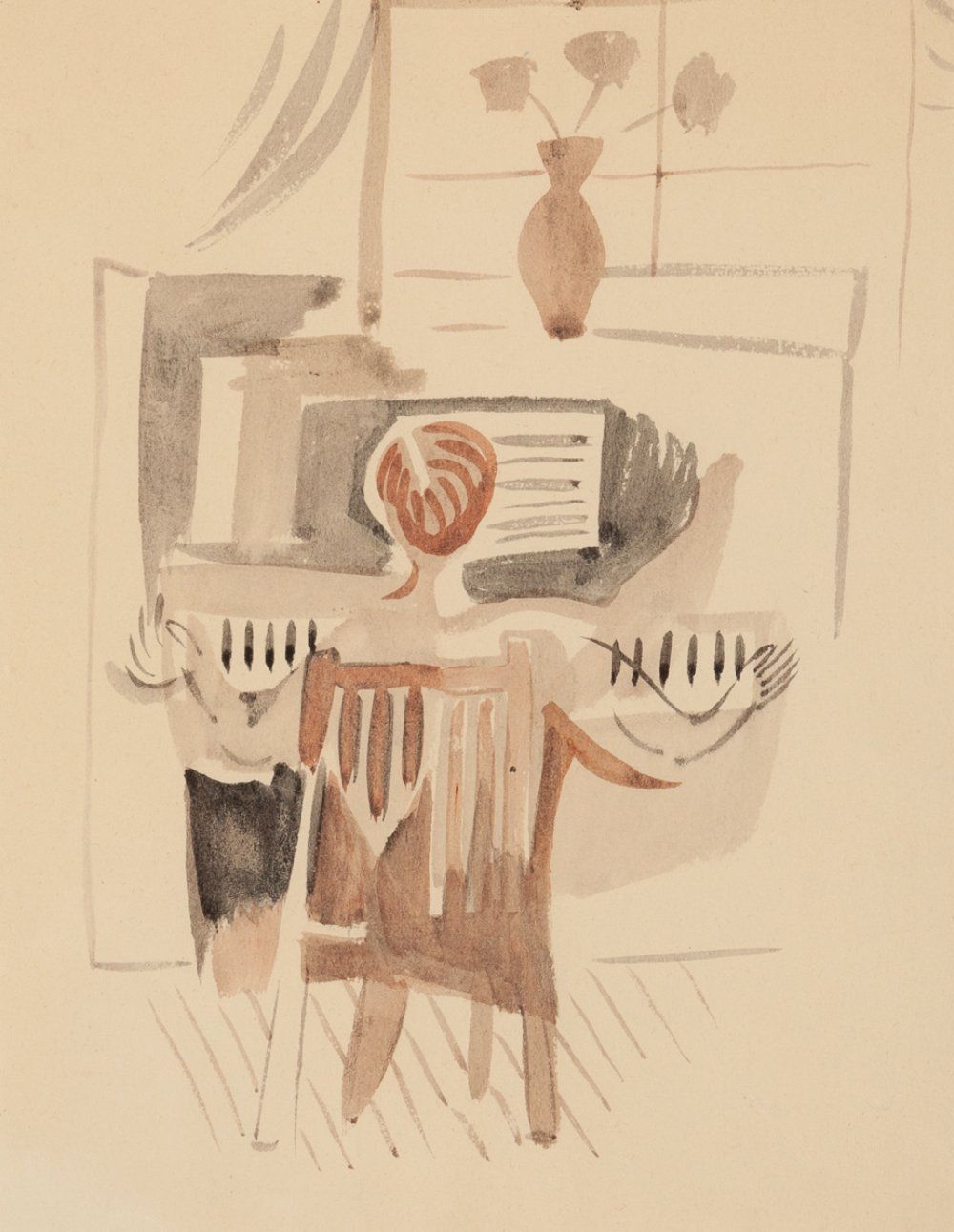Description
FRANCISCO BORÉS LÓPEZ (Madrid, 1898 - Paris, 1972). "The Piano", 1929. Watercolour on paper. Size: 31 x 24 cm; 47 x 40 cm (frame). Attached certificate of Carmen Borés on the back, the piece is not signed. Francisco Borés trained at Cecilio Pla's painting academy, where he met Pancho Cossío, Manuel Ángeles Ortiz and Joaquín Peinado, among others. He also frequented the literary gatherings in Madrid associated with ultraism. During this period he made engravings for a large number of magazines, such as "Horizonte" and "Revista de Occidente", and attended Julio Moisés's Academia Libre, where he coincided with Dalí and Benjamín Palencia. In 1922 he took part for the first time in the National Exhibition of Fine Arts, and three years later he showed his work at the first Exhibition of the Society of Iberian Artists, but the Madrid public's lack of interest in young art prompted him to leave for Paris. In the French capital he came into contact with Picasso and Juan Gris, and made his individual debut in 1927. The following year he held his first solo exhibition in the United States, and in 1930 he exhibited again, this time as part of a group show at the Museum of Modern Art in New York. During the following years he continued to hold solo exhibitions at leading galleries in Paris and London, including the Georges Petit and Zwemmer galleries. After the Second World War he resumed his exhibition activity, and in 1947 the French state acquired a work by Borés for the first time. In 1949 his paintings were bought by the Museum of Modern Art in New York. In 1969 he exhibited at the Galería Theo in Madrid, which brought him closer to the Spanish public, who were practically unaware of his work except in professional circles where, on the other hand, it was highly appreciated. In 1971 he exhibited again at the same Galería Theo, and died in Paris in 1972. The critic Joaquín de la Puente points out several stages in Borés's production: renewed classicism (1923-25), neo-cubism (1925-29), fruit-painting (1929-33), interior scenes (1934-1949) and white style (1949-69). Francisco Borés is represented in leading museums all over the world, including the Centre Georges Pompidou in Paris, the Fine Arts Museums of Bilbao, Buenos Aires, Jerusalem, Gothenburg and Baltimore, the MOMA in New York, the Museo Nacional Centro de Arte Reina Sofía, the National Galleries of Athens, Brno and Edinburgh, the Museo Patio Herreriano in Valladolid, and the Modern Art Museums of Stockholm, Turin and Madrid.
39
FRANCISCO BORÉS LÓPEZ (Madrid, 1898 - Paris, 1972). "The Piano", 1929. Watercolour on paper. Size: 31 x 24 cm; 47 x 40 cm (frame). Attached certificate of Carmen Borés on the back, the piece is not signed. Francisco Borés trained at Cecilio Pla's painting academy, where he met Pancho Cossío, Manuel Ángeles Ortiz and Joaquín Peinado, among others. He also frequented the literary gatherings in Madrid associated with ultraism. During this period he made engravings for a large number of magazines, such as "Horizonte" and "Revista de Occidente", and attended Julio Moisés's Academia Libre, where he coincided with Dalí and Benjamín Palencia. In 1922 he took part for the first time in the National Exhibition of Fine Arts, and three years later he showed his work at the first Exhibition of the Society of Iberian Artists, but the Madrid public's lack of interest in young art prompted him to leave for Paris. In the French capital he came into contact with Picasso and Juan Gris, and made his individual debut in 1927. The following year he held his first solo exhibition in the United States, and in 1930 he exhibited again, this time as part of a group show at the Museum of Modern Art in New York. During the following years he continued to hold solo exhibitions at leading galleries in Paris and London, including the Georges Petit and Zwemmer galleries. After the Second World War he resumed his exhibition activity, and in 1947 the French state acquired a work by Borés for the first time. In 1949 his paintings were bought by the Museum of Modern Art in New York. In 1969 he exhibited at the Galería Theo in Madrid, which brought him closer to the Spanish public, who were practically unaware of his work except in professional circles where, on the other hand, it was highly appreciated. In 1971 he exhibited again at the same Galería Theo, and died in Paris in 1972. The critic Joaquín de la Puente points out several stages in Borés's production: renewed classicism (1923-25), neo-cubism (1925-29), fruit-painting (1929-33), interior scenes (1934-1949) and white style (1949-69). Francisco Borés is represented in leading museums all over the world, including the Centre Georges Pompidou in Paris, the Fine Arts Museums of Bilbao, Buenos Aires, Jerusalem, Gothenburg and Baltimore, the MOMA in New York, the Museo Nacional Centro de Arte Reina Sofía, the National Galleries of Athens, Brno and Edinburgh, the Museo Patio Herreriano in Valladolid, and the Modern Art Museums of Stockholm, Turin and Madrid.
You may also like
